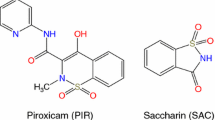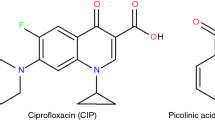Abstract
Purpose
To quantify the effects of the ratio of indomethacin to Neusilin US2 and the processing humidity on the amorphization kinetics, stability and nature of the interaction.
Materials and Methods
A porcelain jar mill with zirconia balls was used to affect conversion of the physical mixtures (48 g) of indomethacin and Neusilin US2 (in the ratios 1:1 to 1:5) to amorphous states at room temperature (25°C) employing either 0% RH or 75% RH. The percent crystallinity in the samples was determined from ATR-FTIR scans chemometrically. The physical stability of these co-ground amorphous powders was evaluated at 40°C/75% RH and 40°C/0% RH.
Results
The lower the ratio of indomethacin to Neusilin US2, the faster is the amorphization during co-grinding. Higher humidity facilitates amorphization with a more pronounced effect at the lower ratio of indomethacin to Neusilin US2. There is further amorphization of some of the partially amorphized samples on storage at 40°C/75% RH for 3 months. Hydrogen bonding and surface interaction between metal ions of Neusilin US2 and indomethacin can explain changes in the FTIR spectra.
Conclusions
The processing humidity and the ratio of indomethacin to Neusilin US2 are important factors to be considered to affect amorphization during ball milling. Amorphous indomethacin can be stabilized by co-grinding with Neusilin US2.








Similar content being viewed by others
References
M. Kinoshita, K. Baba, A. Nagayasu, K. Yamabe, T. Shimooka, Y. Takeichi, M. Azuma, H. Houchi, and K. Minakuchi. Improvement of solubility and oral bioavailability of a poorly water soluble drug, TAS-301, by its melt-adsorption on a porous calcium silicate. J. Pharm. Sci. 91:362–370 (2002).
T. Watanabe, N. Wakiyama, F. Usui, M. Ikeda, T. Isobe, and M. Senna. Stability of amorphous indomethacin compounded with silica. Int. J. Pharm. 226:81–91 (2001).
K. Y. Yang, R. Glemza, and C. I. Jarowski. Effects of amorphous silicon dioxides on drug dissolution. J. Pharm. Sci. 68:560–565 (1979).
E. Yonemochi, S. Kitahara, S. Maeda, S. Yamamura, T. Oguchi, and K. Yamamoto. Physicochemical properties of amorphous clarithromycin obtained by grinding and spray drying. Eur. J. Pharm. Sci. 7:331–338 (1999).
S. Byrn et al., Solid State Chemistry of Drugs, Second ed., 25, 1999.
B. C. Hancock,and M. Parks. What is the true solubility advantage for amorphous pharmaceuticals. Pharm. Res. 17:397–404 (2000).
T. Watanabe, S. Hasegawa, N. Wakiyama, A. Kusai, and M. Senna. Prediction of apparent equilibrium solubility of indomethacin compounded with silica by C13 solid state NMR. Int. J. Pharm. 248:123–129 (2002).
H. Takeuchi, S. Nagira, H. Yamamoto, and Y. Kawashima. Solid dispersion particles of amorphous indomethacin with fine porous silica particles by using spray drying method. Int. J. Pharm. 293:155–164 (2005).
M. Fujii, H. Okada, Y. Shibata, H. Teramachi, M. Kondoh, and Y. Watanabe. Preparation, characterization, and tabletting of a solid dispersion of indomethacin with crospovidone. Int. J. Pharm. 293:145–153 (2005).
T. Watanabe, S. Hasegawa, N. Wakiyama, A. Kusai, and M. Senna. Comparison of polyvinylpyrrolidone and silica nanoparticles as carriers for indomethacin in a solid state dispersion. Int. J. Pharm. 250:283–286 (2003).
A. S. Ali, K. Yamamoto, A. M. El-sayed, F. S. Habib, and Y. Nakai. Molecular behavior of flufenamic acid in physical and ground mixtures with florite. Chem. Pharm. Bull. 40:1289–1294 (1992).
Y. Nakai, E. Fukuoka, S. Nakajima, and Y. Iida. Effect of grinding on physical and chemical properties of crystalline medicinals with microcrystalline cellulose. II. Retention of volatile medicinals in ground mixture.Chem. Pharm. Bull. 26:2983–2989 (1978).
H. Sekizaki, K. Danjo, H. Eguchi, Y. Yonezawa, H. Sunada, and A. Otsuka. Solid-state interaction of ibuprofen with polyvinylpyrrolidone. Chem. Pharm. Bull. 43:988–993 (1995).
V. V. Boldyrev, T. P. Shakhtshneider, L. P. Burleva, and V. A. Severtsev. Preparation of the disperse systems of sulfathiazole-polyvinylpyrrolidone by mechanical activation. Drug Dev. Ind. Pharm. 20:1103–1114 (1994).
N. Kaneniwa and A. Ikekawa. Solubilization of water insoluble organic powders by ball milling in the presence of polyvinylpyrrolidone. Chem. Pharm. Bull. 23:2973–2986 (1975).
N. Kaneniwa, A. Ikekawa, and M. Sumi. A decrease in crystallinity of amobarbital by mechanical treatment in the presence of the diluents. Chem. Pharm. Bull. 26:2734–2743 (1978).
M. Cirri, F. Maestrelli, S. Furlanetto, and P. Mura. Solid state characterization of glyburide cyclodextrin co-ground products. J. Therm. Anal. Calorim. 77:413–422 (2004).
T. P. Shakhtshneider, M. A. Vasiltchenko, A. A. Politov, and V. V. Boldyrev. The mechanochemical preparation of solid disperse systems of ibuprofen-polyethylene glycol. Int. J. Pharm. 130:25–32 (1996).
M. K. Gupta, A. Vanwert, and R. H. Bogner. Formation of physically stable amorphous drugs by milling with Neusilin. J. Pharm. Sci. 92:502–517 (2003).
T. Konno, K. Kinuno, and K. Kataoka. Physical and chemical changes of medicinals in mixtures with adsorbents in the solid state. I. Effect of vapor pressure of the medicinals on changes in crystalline properties. Chem. Pharm. Bull. 34:301–307 (1986).
K. H. Kim, M. J. Frank, and N. L. Henderson. Application of differential scanning calorimetery to the study of solid drug dispersions. J. Pharm. Sci. 74:283–289 (1985).
T. Oguchi, et al., Improved dissolution of naproxen from solid dispersions with porous additives. Yakuzaigaku 57:168–173 (1997).
C. Fuji. Company Literature on Neusilin. Fuji Chemical Industry, Toyama, Japan, 1997, pp 3–4.
M. K. Gupta, R. H. Bogner, D. Goldman, and Y. C. Tseng. Mechanism for further enhancement in drug dissolution from solid-dispersion granules upon storage. Pharm. Dev. Technol. 7:103–112 (2002).
M. K. Gupta, Y. C. Tseng, D. Goldman, and R. H. Bogner. Hydrogen bonding with adsorbent during storage governs drug dissolution from solid-dispersion granules. Pharm. Res. 19:1663–1672 (2002).
I. S. Chuang and G. E. Maciel. Probing hydrogen bonding and the local environment of silanols on silica surfaces via nuclear spin cross polarization dynamics. J. Am. Chem. Soc. 118:401–406 (1996).
I. S. Chuang and G. E. Maciel. A detailed model of local structure and silanol hydrogen bonding of silica gel surfaces. J. Phys. Chem. B 101:3052–3064 (1997).
M. O'Brien, J. McCauley, and E. Cohen. Indomethacin. In H. G. Brittain (ed.), Analytical Profiles of Drug Substances, Volume 13, Academic, London, UK, 1984, pp. 211–238.
L. S. Taylor and G. Zografi. Spectroscopic characterization of interactions between PVP and indomethacin in amorphous molecular dispersions. Pharm. Res. 14:1691–1698 (1997).
K. J. Crowley and G. Zografi. Water vapor absorption into amorphous hydrophobic drug/poly(vinylpyrrolidone) dispersions. J. Pharm. Sci. 91:2150–2165 (2002).
E. Y. Shalaev and G. Zografi. How does residual water affect the solid-state degradation of drugs in the amorphous state?. J. Pharm. Sci. 85:1137–1141 (1996).
V. Andronis and G. Zografi. The molecular mobility of supercooled amorphous indomethacin as a function of temperature and relative humidity. Pharm. Res. 15:835–842 (1998).
P. Tong and G. Zografi. Solid state characteristics of amorphous sodium indomethacin relative to its free acid. Pharm. Res. 16:1186–1192 (1999).
P. Tong and G. Zografi. A study of amorphous molecular dispersions of indomethacin and its sodium salt. J. Pharm. Sci. 90:1991–2004 (2001).
C. Gu and K. G. Kartikeyan. Interaction of tetracycline with aluminum and iron hydrous oxides. Environ. Sci. Technol. 39:2660–2667 (2005).
A. Jubert, N. E. Massa, L. L. Tevez and N. B. Okulik. Vibrational and theoretical studies of the non-steroidal anti-inflamatory drugs Niflumic [2-3((3-trifluoromethy;)phenylamino)-3-pyridinecarboxylic acid]; Diclofenac [[2-(2,6-dichlorophenyl)amino]-benzeneacetic acid] and Indometacin acids [1-(4-chlorobenzoyl)-5-methoxy-2-methyl-1H-indole-3-acetic acid]. Vibr. Spectrosc. 37:161–178 (2005).
P. Mura, et al., Investigation of the effects of grinding and co-grinding on physicochemical properties of glisentide. J. Pharm. Biomed. Anal. 30(2):227–237 (2002).
A. E. Aboutaleb et al., Enhancement of dissolution rate of meclozine HCl by co-grinding and loading onto certain adsorbents. Bull. Pharm. Sci. Assiut University, 25(1):7–14 (2002).
Acknowledgments
The authors gratefully acknowledge financial support from the Dane O. Kildsig Center for Pharmaceutical Processing Research. We are thankful to Mr. Gary Lavigne and Dr. Jack Gromek at the Institute of Material Sciences, University of Connecticut for assistance with FTIR instrument and X-ray diffractometer, respectively. We also want to thank Mr. Sharad Murdande at Pfizer, Groton, CT for his help with HPLC analysis.
Author information
Authors and Affiliations
Corresponding author
Rights and permissions
About this article
Cite this article
Bahl, D., Bogner, R.H. Amorphization of Indomethacin by Co-Grinding with Neusilin US2: Amorphization Kinetics, Physical Stability and Mechanism. Pharm Res 23, 2317–2325 (2006). https://doi.org/10.1007/s11095-006-9062-x
Received:
Accepted:
Published:
Issue Date:
DOI: https://doi.org/10.1007/s11095-006-9062-x




